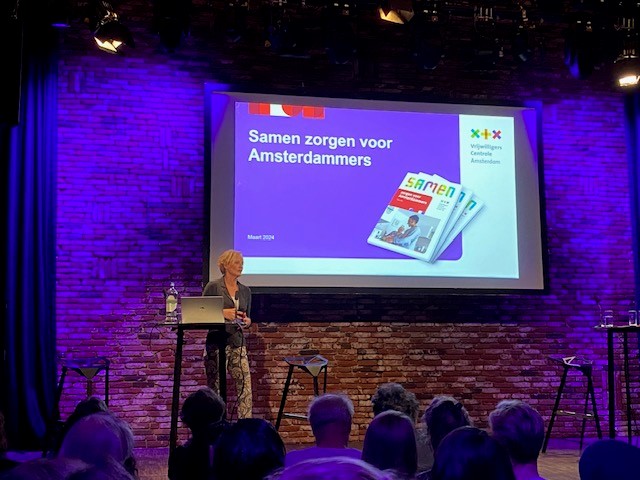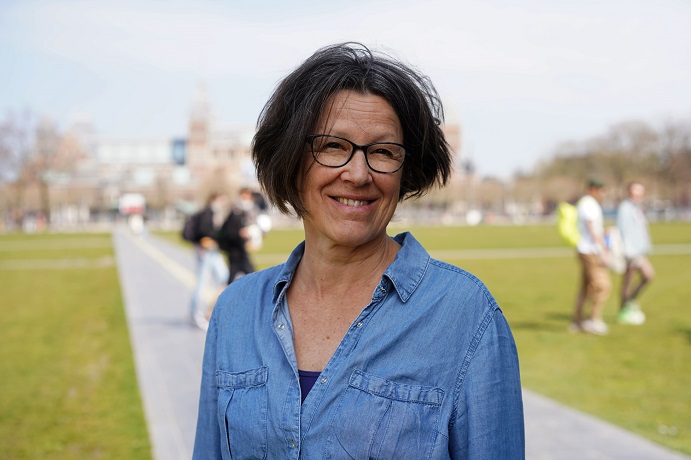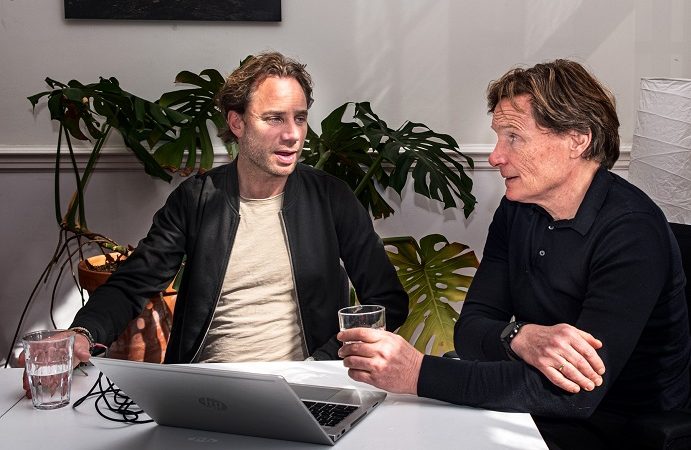The pressure on volunteers in healthcare means that there is not always a safe and clearly defined work environment. How do volunteers and volunteer coordinators deal with this situation? We discussed this with volunteer Lodewijk de Mol van Otterloo and volunteer coordinator Alexander Regeling.
Conference Review ‘Caring Together for Amsterdammers’

It was a bustling event on Thursday, March 21 at Theater Desmet. A full room filled with volunteer coordinators, employees of social care organizations, municipal officials, and volunteers. They had gathered to listen to the presentation of the research ‘Caring Together for Amsterdammers’ on the role of volunteers in facilitating the elderly in Amsterdam to live at home longer. And of course, to discuss it. Because it turned out to be a great interactive meeting with a lot of input and examples from the audience.Pieter Hilhorstled the conversation.“Volunteers find it difficult to indicate when there is no connection; they only mention it when we ask about it.”
Presentation of the report
The report was presented byHenriette van der Meij, director of Volunteers Central Amsterdam. She emphasized the purpose of the research and this conference: We want to give a voice to the volunteer, have conversations with each other, and take action. Key findings from the research:
- Volunteers do not feel part of the policy. They mainly do volunteer work because it offers them something themselves. Volunteer work should above all remain fun!
- The role of the volunteer coordinator is very important. They have the role of gatekeeper: what is the request for help, can a volunteer handle it? They are responsible for a large group of volunteers, but sometimes it becomes too much for them due to the extensive demand for help.
A round through the room quickly revealed that many volunteer coordinators often have an enormous caseload. This was followed by a brief discussion about the need to improve the collaboration between formal and informal care. Then, the audience was asked several questions. They were asked to rate the statement: ‘The Netherlands is aging rapidly in the coming years, volunteers will be overloaded as a result’. This statement received an average score of 7.6. Next, they were asked to provide a word that characterizes the collaboration between formal and informal care: Challenging, necessary, and complementary were the predominant responses.
“Volunteers also have their own lives and leave a big gap when they suddenly disappear.”
Panel with Volunteer Coordinators and volunteer
The first panel consisted of volunteer coordinatorsAlexander Regulationfrom Humanitas,Pauline Mulder-Koelemanfrom the Emergency Service Buitenveldert and volunteerMagda Fernandusfrom Mentorschap Amsterdam Noord. They talked about the important role in assessing the help request. Alexander: “I also recognize that a help request expands further with new help requests as the volunteer work progresses.” Pauline added: “Volunteers experience that there are actually more help requests than those for which they were hired. The volunteer feels reluctant to leave because they would be leaving someone with an unanswered help request. This can lead to the volunteer dropping out. We address this and provide guidance.” They also discussed overload. Magda: “When a volunteer becomes overloaded, it depends on the volunteer themselves: how strong is someone and how much time does someone have? I have experienced a volunteer approaching burnout. That is crossing the line.” Pauline: “Volunteers should be assigned tasks for which they were hired, monitor the boundaries.”
Panel with board members and alderman
This time the alderman tookAlexander Scholtes, Dynamo directorJael van der HeijdenDirector of Care in the Wijk CordaanRonald van Weegenas VCA managerHenriette van der Meijtook their seats on the stools. They discussed, among other things, how the role of the volunteer coordinator can be improved. Alderman Scholtes: “I think everyone agrees that quite a bit of money goes to healthcare and relatively little to the social foundation. That’s what I will strive for. You can see how relieving a volunteer coordinator can be for a volunteer.” The discussion then touched on the connection between formal and informal care. Ronald: “There are great examples of collaborations such as Together North Better with neighborhood teams, general practitioners, HVO Querido, district nurses. They know how to connect with each other.” Jaël added: “Hopefully, the new Social Foundation will provide more structure. I have confidence in that. How do we move towards that caring society? We all just need to become volunteers and do it together!” Scholtes: “More focus on prevention and creating social cohesion. We have high expectations for the social foundation and neighborhood teams; they now have more time to do their work properly. This helps with building up and being able to find each other better. Welfare organizations can better support informal care. Henriette concluded: “Let’s especially look for solutions together with the volunteers themselves, engage in dialogue with them, not from the formal care perspective. So, not talking about volunteers, but talking with them.”
“Volunteers want to be deployed flexibly, and formal care does not want to go along with that.”
Furthermore, they discussed reaching new target groups who can volunteer. Henriette: “I like to connect with people who are retiring about what they will do next. There is a lot of potential there.” Scholtes added: “I thought Henriette’s idea was very good. Also, everyone who turns 18 receives a letter from the municipality, there is a lot of potential for volunteering. I will see what I can do.” Jaël also saw potential in this: “I think we should use these kinds of studies to do smarter marketing to recruit more young people. But, we also need to set boundaries for them, you can’t ask them to do something that is not their expertise.” It was a very valuable meeting with a room full of stakeholders and participants. Thanks to everyone who contributed to this conference for their presence and dedication.
The report ‘Together for Amsterdammers’ ishereto be found.



